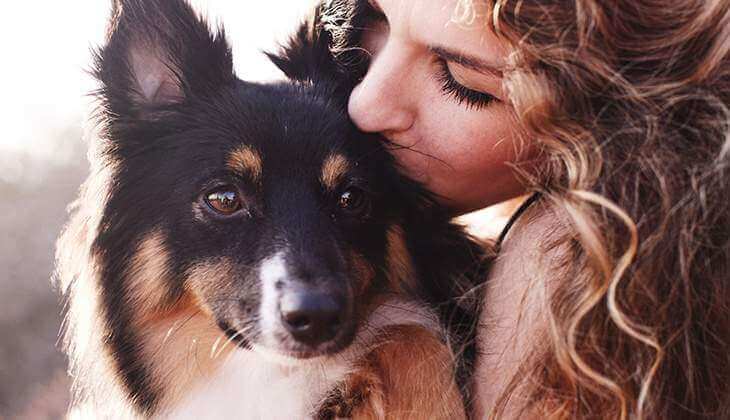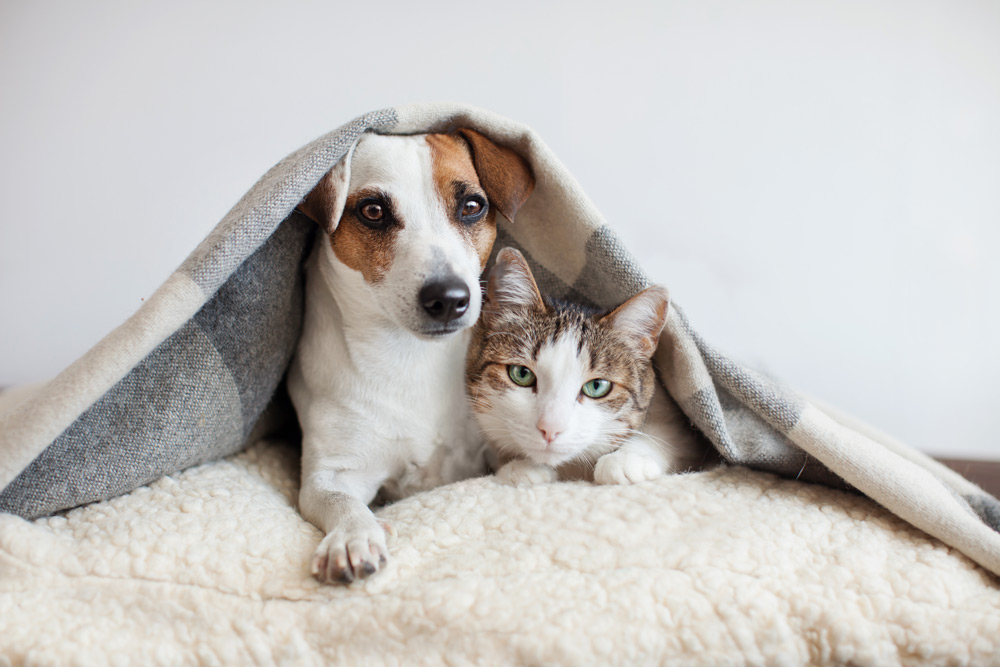Diabetes mellitus is a condition that affects dogs and cats in much the same way that it affects humans. The body is unable to produce any or enough insulin to convert food into energy. This creates a condition where the amount of glucose in the blood is elevated, and the amount of glucose in cells is depleted or nonexistent. Cells are unable to access the glucose needed to function correctly, and so they seek energy from other sources within the body. Eventually, the excess glucose spills into the kidneys and is excreted through the urine. As a result, diabetes is a condition that affects every system of the body. The good news is that diabetes is manageable. Pet parents need to maintain a consistent daily routine that includes insulin injections, an appropriate diet, regular meal times, exercise, and home monitoring.
Lifelong management of diabetes is the key to keeping a dog’s or cat’s body in balance so that all of the body’s systems can function correctly. There is a delicate balance between insulin and glucose levels that need to be re-established when diabetes is first diagnosed. Although most dogs and cats respond to treatment quickly, some take a bit of time. All pet parents of diabetic dogs and cats need to embrace patience daily to help their dog or cat live a long and healthy life.

As with all medical conditions, some complications may arise. The most common side effect of insulin treatment is low blood sugar (hypoglycemia). There are a few factors that can cause this to occur. If the dog or cat receives too much insulin or experiences a change in daily diet or exercise, they can experience hypoglycemia. These factors are all related to the important, consistent daily routine that a veterinarian will establish for a dog or cat, and that a pet parent must carry out. Other conditions can also cause hypoglycemia but are a bit more out of reach for the pet parent. These conditions include the presence of an infection or illness, interactions with other medications, and the presence of other chronic diseases. For this reason, hypoglycemia is to be expected throughout a diabetic dog’s or cat’s life. After all, it’s close to impossible to always control things like infection or illness.
Since pet parents are so in tune with their furry friend’s health and wellbeing, it’s essential they watch out for signs of restlessness, trembling or shivering, unusual movements or behavior, loss of consciousness (coma), and unusual quietness or sleepiness. These are all signs that a dog or cat is experiencing hypoglycemia. A veterinarian should be contacted immediately to help restore the balance of insulin and glucose in the body. If hypoglycemia is left untreated, the results can be fatal.
COMPLICATIONS OF DIABETES IN DOGS
Several long-term complications of diabetes can occur in dogs who suffer from hyperglycemia (high blood glucose levels). The most common complication is cataracts. Excess glucose present in the lens of the eye due to hyperglycemia is converted into sorbitol, which causes an increase in the influx of water into the lens. The increase in water creates a breakdown of the lens fibers and disruption of the healthy structure. The lens becomes cloudy, resulting in loss of vision, usually in both eyes. If a cataract is present the lens of the eye can be removed surgically. A veterinarian will need to evaluate the diabetic dog to determine the feasibility of the surgery. In addition, diabetes may lead to a condition known as ketoacidosis. Ketoacidosis is an acute condition that can be life-threatening. The symptoms of ketoacidosis are vomiting, dehydration, lethargy, or rapid breathing. Careful management and monitoring of a dog’s health goes a long way to reducing the chance that ketoacidosis will occur, but if it does, a veterinarian should be contacted immediately.
Looking for a Vet?
Your veterinarian plays a big role in your pet’s health. Input your location information and get a list of veterinarians near you.
Find A Vet Near MeCOMPLICATIONS OF DIABETES IN CATS
There is the chance that diabetic cats will also develop cataracts, but the risk is not as high as it is with dogs. The most common problems associated with diabetes in cats include recurrent infections and neuropathy. This is also the result of hyperglycemia. Diabetic neuropathy in cats usually appears as a weakness in the hind legs. Prompt, appropriate treatment of diabetes and hyperglycemia will often reverse the condition.
RISK MANAGEMENT FOR DIABETIC DOGS AND CATS
There’s no doubt, diabetic dogs and cats depend upon their pet parent and their veterinarian to closely monitor their condition. When pet parents can stick to the daily routine and track progress, veterinarians can accurately assess what, if any, changes need to occur in the dog’s or cat’s routine to maintain optimal health. Dogs and cats who are monitored closely can live a long and healthy life despite their condition. Life really is the practice of listening and responding to the body’s needs for nourishment on all levels. The connection between pet parents and fur buddy becomes that much closer with something like diabetes management, but there’s nothing a pet parent wouldn’t do to make sure the journey with their furry friend is long and filled with love.







 Go To United States
Go To United States Austria
Austria Belgium
Belgium Czech Republic
Czech Republic Denmark
Denmark Europe
Europe Finland
Finland France
France Germany
Germany Greece
Greece Hungary
Hungary Ireland
Ireland Israel
Israel Italy
Italy Netherlands
Netherlands Norway
Norway Poland
Poland Portugal
Portugal Romania
Romania Slovakia
Slovakia Spain
Spain Sweden
Sweden Turkey
Turkey United Kingdom
United Kingdom